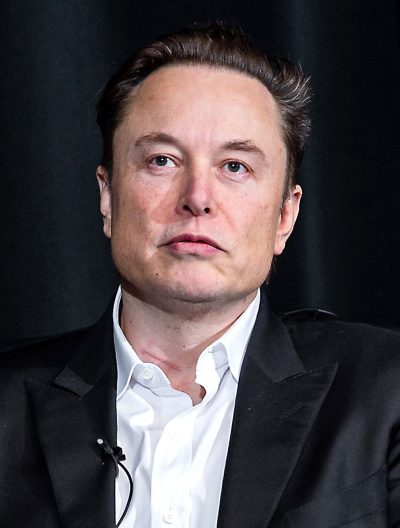
One of the wisest things ever uttered by an American was spoken by the famous Sioux Indian chief Sitting Bull, who said, “The white man knows how to make everything, but he does not know how to distribute it.” (Our Country, Then and Now, p.124)
Richard C. Cook writes:
As of May 3, 2025, Forbes reported that Elon Musk, co-founder of Tesla and SpaceX, is the richest person in the world with a net worth of $388 billion. This doesn’t mean that his pockets are full of money. Approximately 60% of Musk’s wealth is tied to Tesla stock and options, with stock holdings as well in SpaceX, Twitter/X, and other investments. Of course keeping the stock market afloat is the #1 job of the US government.
Besides being the “richest,” Musk is also among the most controversial, especially after his work for President Donald Trump slashing the federal budget as head of “DOGE”—the Department of Government Efficiency. By law, Musk’s role is merely advisory: he makes recommendations but no decisions. But some of the decisions Trump has made have been huge, such as the abolishment of the Agency for International Development, actually a major CIA front devoted to worldwide imperial subversion.
Here is a Wikipedia summary of what has gone on so far with DOGE:
“In 2025, Elon Musk and the Department of Government Efficiency (DOGE) teams gained access to large parts of the United States federal government. Tens of thousands of United States federal government employees were laid off or fired as a result, and many public records were modified or removed from federal websites and databases. Attempts have been made to shut down or terminate entire departments and agencies of the government. These actions have fostered controversy and resistance from some members of government, civil society, and the public.”
Obviously lots of people don’t like Elon Musk very much! In a recent interview with Lara Trump, a Fox host and the US president’s daughter-in-law, Musk accused the American “legacy media” of waging a concentrated “character assassination” effort against him, claiming they would have “immediately” killed him “in reality” if offered such an opportunity.
Image: Musk with then-president-elect Donald Trump in November 2024 (Public Domain)
This is not the place to recap Musk’s entire biography in detail or his press coverage. We’ll provide a few of the more pertinent details later in this article. We shall say, however, that as one of the world’s leading technologists, we feel Musk deserves a fair hearing. This is particularly so as Musk’s background reflects his ideas about economic progress and reform, an urgent topic given the facts of the US government’s $36+ trillion sovereign debt and the massive controversies that have erupted over Trump’s initiatives on tariff revisions and other topics pertaining to the US economy.
But first, I would like to turn to one of my fellow Three Sages, Dr. Lewis Coleman, for his appreciation of Musk’s technological acumen.
Dr. Lewis Coleman writes:
Mr. Richard Cook has invited me to share my thoughts about Mr. Elon Musk, particularly the Tesla automobile, one of which I own. I have more questions than answers, but perhaps my observations can leaven the controversies surrounding Mr. Musk, who is surely one of the most interesting public personas of our time.
Electric cars are hardly new, and their history seems pertinent to this article, because it appears that the automobile history is about to come full circle. Electric cars were as popular as gas cars at the turn of the previous century, when their simplicity, reliability, and low maintenance were appreciated. However, they were constrained by the low energy storage capacity of their heavy lead/acid batteries, which limited their speed and range. Gas cars prevailed because the greater energy capacity per unit of weight and/or volume of refined gasoline conferred superior speed and range, especially after the introduction of electric starter motors that made them safer and easier for women to drive.
Before WWI the car industry had consisted of numerous small companies that relied on skilled metalworkers to produce elegant but expensive automobiles for wealthy customers. Rapidly developing rail networks remained viable competition for expensive gas cars until Henry Ford introduced his brilliant technique of mass production, which reduced precision manufacturing to small incremental steps that minimized skill requirements and lowered the cost of the vehicle. The superior mobility and convenience of Ford’s cheap cars proved more desirable than rail transport, which can only serve fixed locations with limited schedules and are thus viable only in densely populated locations. This devastated the Rothschild plan to create railroad networks to dominate transportation, making the money magnates desperate for an entry to the automobile business. They had used their banking power to precipitate a deflationary “banking panic” in the late 1800s which bankrupted William Durant, the founder of General Motors, who was forced to sell his stock at rock bottom prices to cover his loans; whereupon the Rothschilds and DuPonts pooled their resources and purchased a controlling interest in General Motors. Henry Ford survived by strong-arming his dealerships to provide the money needed to sustain his loans.
The smaller car companies were bankrupted as General Motors, Chrysler, Studebaker and Rambler/Nash copied Ford’s mass production ideas, but their competition produced hydraulic brakes, electric starter motors, heating and air conditioning systems, better engines, and improved frames so that American cars dominated worldwide auto sales after WWI. However, the “Big Three” (Ford, General Motors, and Chrysler) colluded with one another and with the petroleum industry to halt innovation and destroy competition. For example, they bankrupted the Tucker car company, which had introduced safety glass, rear engines, and swiveling headlights. Similarly, Chrysler introduced a water injection system during the 1930s that smoothed combustion, optimized power and efficiency, and flushed soot and sludge from the engines. But Chrysler soon withdrew this option at the behest of the oil cartel. Thereafter, the sheet metal changed every year with hoopla, but American car engineering remained unchanged, regardless of promising ideas that appeared in car magazines, including digital wiring harnesses, advanced headlights, electric brakes, and better engines. I remember how a clever motorcycle mechanic from India carved grooves in the cylinder domes and piston heads of his motorcycle engines to smooth combustion and improve efficiency. He borrowed money, purchased a Tata sedan, and modified its engine to prove and patent his concept, but the car companies ignored him. Instead of innovating, they sought to save money by subcontracting electrical harnesses, fuel pumps, pulleys, alternators, and other parts manufacturing to independent firms. These anti-competitive measures frustrated innovation.
Hearkening back to the early 1960s, Japanese and European manufacturers now flooded the American market with fuel-efficient small cars, whereupon new federal air pollution restrictions obliged car companies to add expensive “catalytic converters” and anti-pollution devices that robbed engine power and efficiency. Years later I met a scrub technician who had been a factory trained car mechanic. He explained that the anti-pollution modifications diverted gasoline to supposedly cool engine parts, which necessitated catalytic convertors to burn the raw gasoline wasted by the engines. I laughed out loud when I recognized this ploy to pad oil cartel profits.
As power hungry radios, window defrosters, and heated seats exaggerated power requirements, car companies found it impossible to advance from 12-volt to 48-volt electrical systems because this entailed complicated negotiations with multiple subcontractors. Even today, these practices have paralyzed the ability of gas buggy companies ever to compete with Elon Musk’s Tesla.
My interest in electric cars began when I landed a summer job at the Union Carbide Metals Co. factory in Marietta, Ohio to help pay for my college tuition. My father was a mechanical engineer at the plant, and he gave me an introductory tour of its facilities, which included gigantic “ball mills” where large chunks of ferroalloy metal were reduced to powder by rotating them inside giant “ball mill” cylinders the size of locomotives with hardened metal spheres the size of cannonballs. The resulting powder was sold as “additives” to convert steel into rust-resistant “stainless” steel. The cylinders were rotated by electric motors that stood taller than a man. When we escaped the noise, I asked my father why they used electric motors instead of diesel engines to power the ball mills. He explained that electric motors generate far more torque than diesel engines, and a piston engine capable of generating comparable torque would have been half the size of the building. I knew enough about cars to understand that independent electric motors mounted in each wheel plus situating batteries beneath cars to enable a low “polar” center of gravity would be vastly preferable to the heavy, hot, smelly, and noisy gas engines that disturbed performance no matter where they were located. Thus began my long wait for the reappearance of electric cars.
The prospects for electric cars seemed promising during my youth. I read articles about Ford’s plans for an electric “skateboard” design with motors on each wheel, and Honda’s engineers were surprised by the performance of their prototype hybrid car with an electric motor mounted on the drive shaft. They called this “electric supercharging.” I also remember reading a front-page report in the LA Times announcing that General Motors had patented the means to control motors on all four wheels of an electric car. However, no electric cars appeared until 1991, when General Motors introduced the EV-1, which was impressive for its time. Though it used lead/acid batteries, had a range of only 70-100 miles, and was available only as a lease, it was loved by the lucky few who obtained them due to its low maintenance and operating costs. Some tried to hide them beneath haystacks when GM cancelled the lease program in 2002 and deliberately destroyed them. GM has yet to explain this policy.
Soon thereafter, Martin Eberhard and Marc Tarpenning founded Tesla Motors to manufacture a new sports car using the new lithium batteries introduced by computer companies. Elon Musk joined as an investor and chairman in 2004, whereupon he quickly dismissed Eberhard and Tarpenning and became CEO. I was pre-occupied with my anesthesiology practice by this time and didn’t pay much attention until I read that Tesla was planning to build a nationwide system of electrical charging stations. At that point I realized that electric cars were going to replace gas buggies.
I’m not quite sure what to make of Mr. Musk. For ordinary people, success comes after a lifetime of dedicated toil, soon followed by death; and scientific visionaries typically die long before accumulating evidence verifies their concepts. Such constraints, however, don’t apply to the rich. For example, Bill Gates’s father was a wealthy foundation attorney, and Gates attended expensive private schools that prepared him for Harvard, where he played poker with future CEO’s Ballmer of Microsoft and Immelt of General Electric. The IBM corporation recruited him to introduce personal computers, whereupon he purchased the DOS operating system for a pittance and used it to establish Microsoft.
Image: SpaceX Starship SN9 prototype (Licensed under CC BY-SA 4.0)
Musk’s family is likewise wealthy. While he is unquestionably intelligent and knows more about engineering and business than I do, I find it difficult to believe that his stellar business successes at Zip2, PayPal, X.com, Tesla, SpaceX, Starlink etc. were accomplished without a lot of help from somewhere, and I tend to regard him as the public representative of a group of wealthy and sophisticated oligarchs whose complex plan to control communication, transportation, and energy production has been long in preparation. I could readily believe that their ideas originated with Nicola Tesla’s Wardenclyffe Tower in 1917.
Musk reputedly read science fiction avidly in his youth, which may explain his notion of establishing a Mars colony, but from my perspective human physiology is incompatible with the environments of Mars and outer space, and a manned mission to Mars, not to mention sustaining a Mars colony, would be impossible with existing technology. A more believable explanation is that SpaceX is developing gigantic re-usable rockets to boost 600 satellites into orbit with each launch to sustain the planned network of some 45,000 low earth orbit Starlink satellites needed to revolutionize worldwide communications and optimize robotic transportation efficiency.
Like Pollyana, Musk seems to perceive corporations as harmless agencies devoted to making people happy, and though his corporations will unquestionably revolutionize transportation and communications, I fear that they could invite a dystopian surveillance state on steroids that would cause Orwell to roll in his grave. Like Frankenstein, corporations enjoy legal powers and tax privileges that are denied to ordinary citizens. Like Dracula, they live forever and their insatiable lust for profit sucks the blood of commerce (money) from circulation and undermines progress and prosperity. Capricious corporate pollution poisons populations, and medical corporations pursue profits at the price of public health.
Nevertheless, many of Musk’s viewpoints are appealing and suggest that he is open-minded and remarkably well-read. He has promoted free speech and helped halt government corruption. He is concerned about the ongoing collapse of fertility that threatens civilization. He has repeatedly criticized the Federal Reserve and appears to understand the advanced monetary ideas of C.H. Douglas, which he evidently learned via his Canadian grandfather, and favors the idea of a generous universal basic income for all citizens. I will leave this to elaboration by Richard Cook, who is an expert on the subject.
Musk has also stated on more than one occasion that both he and his cousin suffered severe adverse reactions to the notoriously worthless, deadly, and conspiratorial COVID “immunizations” foisted upon the public by the likes of Fakir Fauci, Widowmaker Gates, the WHO, the CDC, the FDA, and other agencies of “Big Pharma.” His near-death COVID experience hopefully makes him ready to entertain the prospect of medical reform and revolution via acceptance of medical stress theory.
Musk has stated on more than one occasion that he expects that exponential advances in computer technology and materials research will soon revolutionize both manufacturing and services to the point that human labor is no longer needed and money becomes meaningless. He ought to appreciate this better than most, because Tesla’s robotic transportation development has thrust the company to the forefront of artificial intelligence and made Musk’s factories paragons of efficiency and productivity.
In all these regards, I believe that we are now witnessing a convergence of powerful forces that could promise unprecedented advances in civilization.
For instance, as the invention of the printing press, the introduction of paper money, and the profits of incessant warfare have produced abundant capital, it is now financing the dramatic development of Tesla, SpaceX, Starlink, the Boring Company, and Proterra Bus Company, which will soon revolutionize communication and transportation.
A new industrial revolution based on exponentially advancing computer technology and limitless development funds promises to revolutionize manufacturing and produce artificially intelligent humanoid robots that will reduce the need for human labor and hopefully render war unthinkable.
The discovery of the mammalian stress mechanism by myself and other researchers promises to reform and revolutionize medicine, provide inexpensive and effective medical treatments to prevent and cure disease, make effective health care universally available for all citizens, and eliminate the eternal threat of disease and premature death. See my book 50 Years Lost in Medical Advance: The discovery of Hans Selye’s stress mechanism.
The recent COVID conspiracy has alerted the public to the danger of criminal corporate medical abuse.
The 1963 coup d’ etat by the gang of vicious criminals that murdered President Kennedy and hijacked control of the American government has sowed public confusion while they perverted elections, stole the gold from Fort Knox, raped and pillaged government funds, and promoted destructive foreign wars. This has alerted the American public to the need for drastic government reform.
The election of President Donald Trump and his appointment of reform-minded cabinet members has initiated much-needed government changes that will hopefully reverse the ongoing destruction of American civilization.
There are historical precedents for monetary reform. Jewish tradition calls for cyclical debt relief. When the oligarchs of Athens faced a disastrous deflationary depression caused by their own rapacious greed, they chose a progressive merchant named Solon to deal with the problem, and he began by abolishing debt. When the Romans subsequently faced a similar imbalance of wealth and power, they implemented a universal basic income. These reforms prolonged the survival of Athens and Rome, though neither managed to abolish slavery so that their civilizations ultimately failed.
The rich American monetary history of colonial scrip and Civil War greenbacks paves the path for progressive monetary management.
There is little choice but to pursue this promising path for the future, for the alternative is a moribund and stagnant strangulation of progress and prosperity by a drastic imbalance of wealth and power that corrupts and collapses civilizations from within. This has already happened to the American experience whose survival is now questionable.
This concludes Dr. Coleman’s narrative.
***
Richard C. Cook writes:
One of the points of attack against Musk is that he supposedly believes that technology should replace the political process; i.e., that really smart people—like him, of course—should run governments and make decisions, not elected officials. Further, say critics, Musk and his ilk appear to believe that if these smart people were left on their own, they would create a matrix of totalitarian control run by computers with no humane values resulting in hell-on-earth for everyone except those at the top of the anthill. Such control would include “digital currency,” total surveillance of all human activity and communications, “digital identity,” and carte blanche to the Deep State to rub out anyone they please.
All this is certainly something to fear, even though the movement of money has long been accomplished by electronic funds transfer, we have had drivers licenses with numbers for decades, and the CIA and NSA have been snooping into our private discourse forever. But the evidence in Elon Musk’s profile for a quantum leap into the hi-tech Brave New World so many fear seems ambiguous.
Image is from YugaTech
Yes, Musk believes we should apply technology to solving problems, but he supported Trump for president and concedes Trump’s authority to implement his recommendations. He removed much of the Deep State’s abuse of Twitter/X, and his idea of applying intelligence to governance does not necessarily mean the total removal of public or political participation and approval.
With DOGE, Musk has been implementing some of the main MAGA principles as approved by the electorate; namely, identifying and removing “fraud, waste, and abuse” of taxpayer funds. Particularly important has been to reverse actions by the Biden administration to inflate government employment numbers by adding cadres of federal and contractor employees for the purpose of creating a host of new Democratic Party voters. And he’s been working at making a serious effort to reduce an out-of-control federal deficit that has reached over $36 trillion. For commentators to attack these efforts in their totality as technocratic misrule is irresponsible.
Of course technology has always been abused by non-elected actors. An example is collusion between the Deep State and contractors to fill the skies with dangerous chemtrails, abuse the Trump administration may have begun to rein in. Another is the way technology has been abused through usurpation by the globalist financial elite behind outfits like WEF to foist delusions on governments such as “carbon capture” and “net zero.” Or the gigantic hoax of the genocidal COVID pandemic perpetrated by the Deep State and Big Pharma; that’s been a real abuse of technology. Far from Elon Musk furthering the pandemic, he himself has been a victim, admitting to feeling he was so ill he would die after being inoculated. And the pandemic too had political approval during Trump’s first term as did Biden’s—Operation “Warp Speed” was a top presidential priority.
But again, technocrats should not be in charge. This is proven by the colossal failure of the European Union, run by a gaggle of unelected experts out of Brussels with little input even from their own elected European Parliament in Strasbourg. See this: The death of Old Europe: The living corpses in Brussels have forgotten how to fight for their world
At the same time, science and technology can be good servants, if poor masters. But it’s been in the area of economics that Musk’s contribution to resolving today’s national emergency may become most meaningful.
Here I shall take the liberty of a lengthy quote, with comments, from a recent article on Whitney Webb’s Unlimited Hangout website by an author named Iain Davis entitled “The Dark MAGA Gov-Corp Technate — Part 1.” I want to be 100 percent clear that this does not constitute an endorsement of Whitney Webb, Unlimited Hangout, Iain Davis, or his article. The quote just saves me some time and is a convenient means of introducing certain ideas.
Iain Davis states:
“Elon Musk’s maternal grandfather was Joshua N. Haldeman (1902–1974), who hailed from Pequot, Minnesota. In 1906, when Joshua was four, his parents took the family north and settled in the Canadian province of Saskatchewan. In 1936, after 34 years of life on the western plains of the US and Canada, Joshua Haldeman moved to Saskatchewan’s provincial capital, Regina, where he established a successful chiropractic business.
“Between 1936 and 1941, Haldeman did more than realign spines. He was also the research director and leader of the Regina branch of an up-and-coming entity known as Technocracy Inc…. In 1940, while serving in that post, he was arrested by the Royal Canadian Mounted Police (RCMP) for violating Defence of Canada regulations, under which Technocracy Inc. was deemed an “illegal organization.” As a result, Haldeman was denied entry into the US, where he had intended to deliver a speech promoting Technocracy. He was then fined and given a suspended sentence for heading up the controversial Technocracy Inc.
RCC: This incident was a result of wartime hysteria by the British who ran Canada, as the “Technocracy” movement advocated replacement of elected governments by cadres of “experts.” No doubt it was perceived as having fascist overtones.
“Following his 1941 conviction, Haldeman joined the Canadian Social Credit Party (Socred), which had been formed in 1932 by evangelist William Aberhart. Socred sought to implement the “social credit” economic theory of British engineer and economist C. H. Douglas. Like Socred, Technocracy was based upon the “industrial efficiency” ideas of engineer Frederick Winslow Taylor (Taylorism). It also dovetailed with the “conspicuous consumption” economic theories of Thorstein Veblen.
“C. H. Douglas presented his theory of social credit to tackle what he saw as the inequality of opportunity created by the centralized control and hoarding of resources and wealth. He identified the “macro-economic gap” between retail price inflation and wage growth. He suggested filling that gap by creating the “National Credit Office”—which would be independent of state control—to issue “debt-free” credit to consumers. Part of this National Credit would be used to lower retail prices. The remainder would be distributed to all citizens, irrespective of their personal financial situation, as a way of creating consumer demand for goods. Douglas’ suggestion was an early model of Universal Basic Income (UBI).”
RCC: This is a very crude and incomplete description of C.H. Douglas’s economic ideas, which indicates that the author, Iain Davis, really doesn’t understand them. Douglas’s basic concept is self-evident, which is that in any developed nation, the prices that are paid for goods and services (GDP) do not equal the amount of money paid out by producers as wages, salaries, and dividends. Rather, there is a “gap.” Davis’s characterization of this gap as one between “retail price inflation and wage growth” is meaningless. But the gap between GDP and national income is real. The result is a massive and constant shortage of societal purchasing power. And the causes of the “gap” are manifold, including savings, hoarding, retained earnings, accounting lags, and others. I describe this process in the following article: C.H. Douglas: Pioneer of Monetary Reform. I suggest you read this article before proceeding. Returning to Davis’s article, his statement about “debt-free credit” and lowering retail prices is essentially correct. The idea that this was an early model of a Universal Basic Income (UBI) is misleading in that Douglas’s National Credit would not be a guaranteed fixed amount but would reflect the actual production of the physical economy, similar, for instance, to the Alaska Permanent Fund.
More from Iain Davis:
“Joshua Haldeman’s family of seven, which included a daughter, Maye Haldeman, left Canada in 1950 to set up base in Pretoria, South Africa. As entrepreneurs and adventurers, they traveled extensively. By her own account, Maye Haldemann was close to her parents and adopted their entrepreneurial spirit, sense of adventure, and work ethic. Unavoidably, she was also familiar with her parents’ political ideas. Maye recalled that, as a child, she and her siblings would do their ‘monthly bulletins and photocopy newsletters, and then put the stamps on the envelopes.’
“Maye Haldeman married Errol Musk in 1970. Their son, Elon, was born in Pretoria a year later. He was an infant when his grandfather died in a plane crash. Nonetheless, as he was growing up, Elon learned about and became intimately familiar with his grandfather’s political philosophy.
“Though Musk was evidently close to his mother, he elected to stay with his father in Pretoria when his parents divorced in 1979. After Elon’s relationship with his father soured, he encouraged his mother to claim her Canadian passport, according to Maye. Her doing so enabled Elon to quickly secure his own Canadian passport, emigrate from South Africa—which he did at age 17—and thereby avoid compulsory military service in that country.
“Elon’s ultimate goal was to live and work in the US. But before that, he decided to head from Montreal to Waldeck, Saskatchewan, where, upon returning to his roots, he worked as a farm hand on his second cousin’s farm. There, he awaited his mother Maye’s arrival from Pretoria. She was followed by Elon’s two siblings, Kimbal and Tosca, who also wanted to be closer to the Haldeman side of the family in Canada.
“Musk studied at Queen’s College in Kingston, Ontario, for two years before acting upon his aim of settling in America. He transferred to the University of Pennsylvania, where he earned a bachelor’s degree in physics and economics. Subsequently, he interned in Silicon Valley tech companies before abandoning education to pursue his entrepreneurial ambitions.”
We’ll stop our excerpts from Iain Davis’s article here, which is part of a larger piece produced by Davis and Unlimited Hangout which is supposed to cause us to throw up our hands in horror at what these demonic technocrats have in store for us.
But the short excerpt on C.H. Douglas above produces exactly the opposite effect by highlighting the work of the greatest economic genius of the 20th century. During the 1920s and 1930s, Douglas was in stiff competition with John Maynard Keynes for ideological supremacy. But the bankers loved Keynes as much as they hated Douglas. For Douglas’s program would eliminate the borrowing from banks as the means of filling the GDP-income “gap.” By contrast, Keynes’s prescription of ultra-massive government debt financing executed through the banks as the means of keeping governments afloat, took advantage of the fact that the most propitious time to exact tribute to the banks is always wartime. Indeed, the main purpose of Keynesian Economics is to assure perpetuation of the familiar adage, “All wars are bankers’ wars.”
I have never had the opportunity of meeting or speaking with Elon Musk, but I suspect he is quite familiar with the ideas of C.H. Douglas through his family background. If so, he knows the potential of National Credit to elevate the actual wealth of the entire human community. Perhaps this is where some of President Donald Trump’s own enthusiasm for a future of prosperity has come from—i.e., from Musk’s own informed enthusiasm.
Of course, those like Iain Davis who want us to “rage against the machine” and attack all forms of technology like the Luddites of old, view UBI as a thing of the devil—at least a thing favored by the devils at the World Economic Forum who have advocated for it. But so have historical figures like Thomas Paine, Huey Long, Milton Friedman, Dr. Martin Luther King, Jr., George McGovern, Richard Nixon, Pope Francis, and many others. See this: List of advocates of universal basic income.
And UBI does not mean no one will have to do any work, which is a really stupid criticism, since without work carried out by humans somewhere in the manufacturing-distribution chain, nothing could be produced. UBI is in fact a dividend, which is why it is included in Dennis Kucinich’s NEED Act introduced in 2011 and based on the American Monetary Act developed by the late Stephen Zarlenga and myself when he headed the American Monetary Institute and I worked for the U.S. Treasury Department’s Financial Management Service.
So let’s see if Elon Musk gets this message. If so, the monetary reform movement, which has a long and distinguished pedigree, will no doubt appreciate his support.
*
Click the share button below to email/forward this article. Follow us on Instagram and X and subscribe to our Telegram Channel. Feel free to repost Global Research articles with proper attribution.
This article was originally published on Three Sages.
Richard C. Cook is a retired U.S. federal analyst with extensive experience across various government agencies, including the U.S. Civil Service Commission, FDA, the Carter White House, NASA, and the U.S. Treasury. He is a graduate of the College of William and Mary. As a whistleblower at the time of the Challenger disaster, he exposed the flawed O-ring joints that destroyed the Space Shuttle, documenting his story in the book “Challenger Revealed.” After serving at Treasury, he became a vocal critic of the private finance-controlled monetary system, detailing his concerns in “We Hold These Truths: The Hope of Monetary Reform.” He served as an adviser to the American Monetary Institute and worked with Congressman Dennis Kucinich to advocate for replacing the Federal Reserve with a genuine national currency. See his new book, Our Country, Then and Now, Clarity Press, 2023. Also see his Three Sages Substack.
Dr. Lewis S. Coleman is Chair of the Science and Education Board of the American Institute of Stress. He is a board-certified anesthesiologist who completed his BS degree in biology at the Ohio State University, obtained his MD degree from New York Medical College, and completed his surgical internship and anesthesiology residency at UCLA, followed by 40 years in private practice. Dr. Coleman’s basic sciences instruction at NYMC miraculously coincided with the two-year sojourn of Dr. Johannes Rhodin, who was retained by the school to reform its curriculum. Dr. Rhodin was a famous researcher and expert on the stress theory of Dr. Hans Selye. His lectures devastated the dogma of classical physiology and convinced Coleman that stress theory represented the future of medicine. Many years later, these lectures enabled Coleman to identify Selye’s long-sought Mammalian Stress Mechanism, which promises to revolutionize medicine and provide a new era of health, longevity, and freedom from the eternal scourge of disease and premature death. Coleman sets forth his ideas in his new book, 50 Years Lost in Medical Advance: The Discovery of Hans Selye’s Stress Mechanism.
“Every human enterprise must serve life, must seek to enrich existence on earth, lest man become enslaved where he seeks to establish his dominion!” Bô Yin Râ (Joseph Anton Schneiderfranken, 1876-1943), translation by Posthumus Projects Amsterdam, 2014. Also download the Kober Press edition of The Book on the Living God here.
Featured image is from the Public Domain
Global Research is a reader-funded media. We do not accept any funding from corporations or governments. Help us stay afloat. Click the image below to make a one-time or recurring donation.


.png) 1 month_ago
15
1 month_ago
15

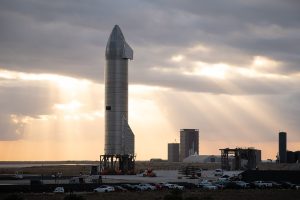












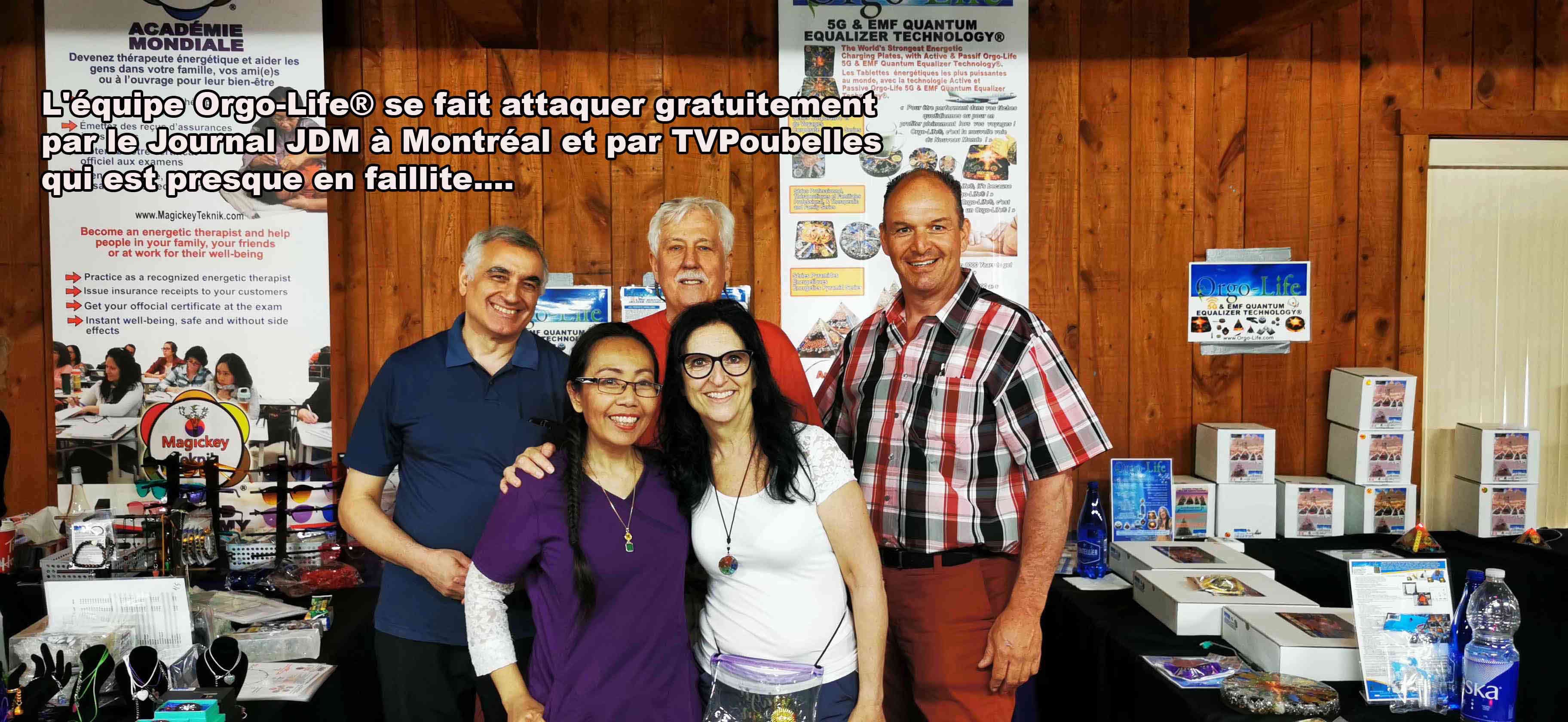
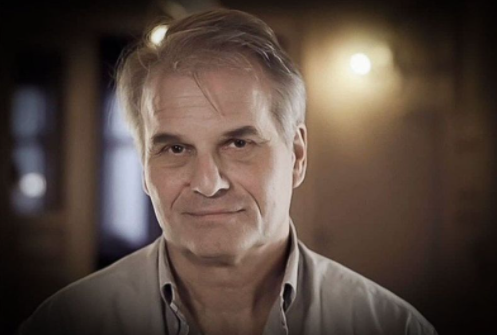

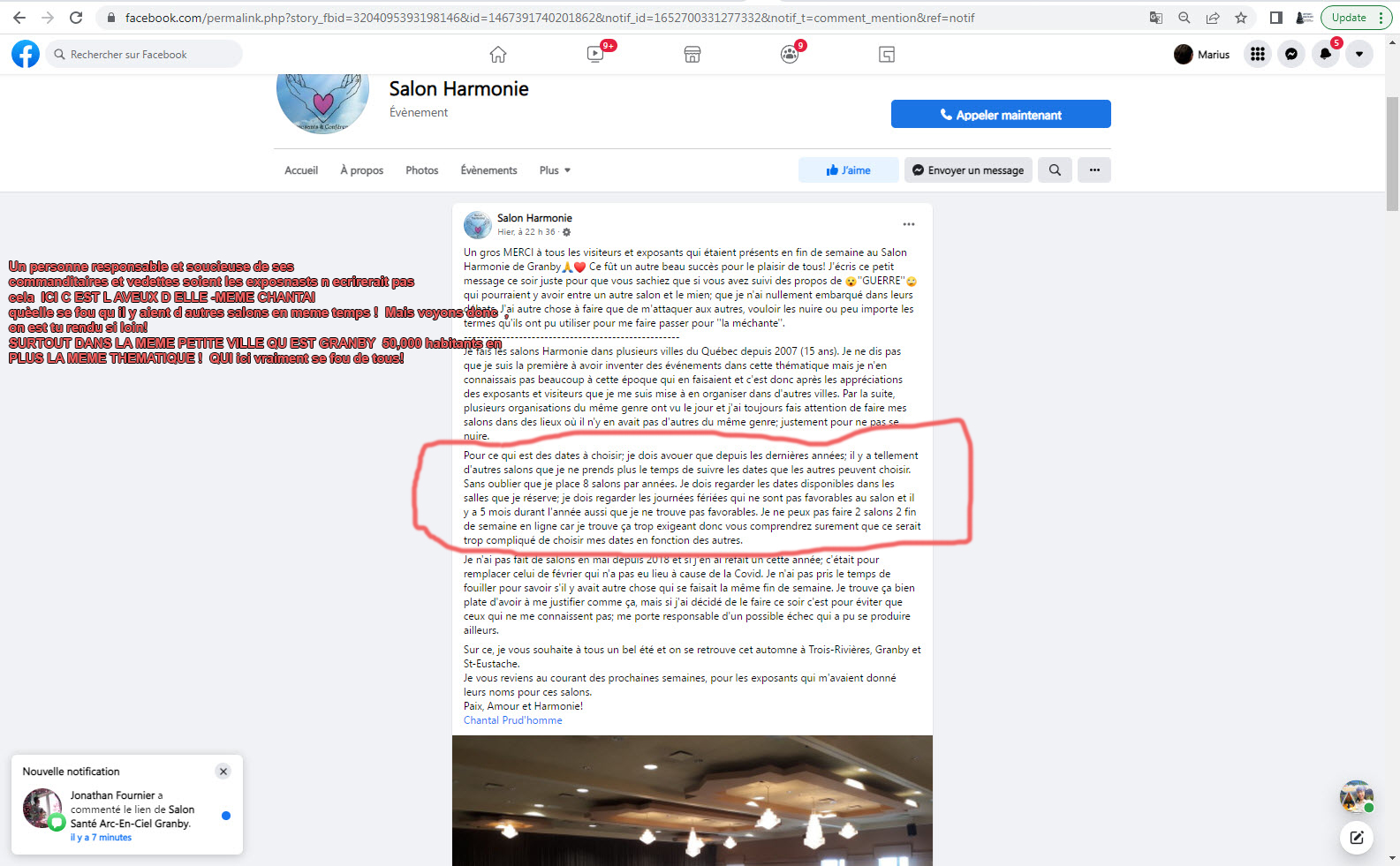




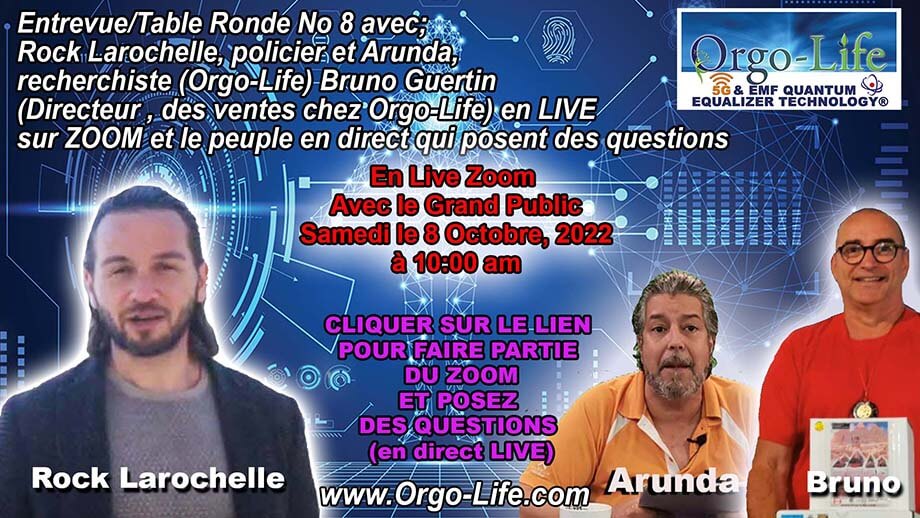


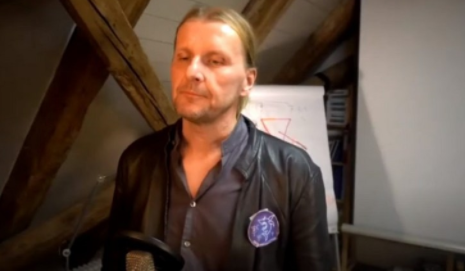



 French (CA)
French (CA)